INCHING CLOSER INDIA as a GLOBAL CE MANUFACTURING HUB
Given the competitiveness and favourable working conditions, many global manufacturing companies have been shifting base to India. As the country moves to become a global manufacturing hub, it needs to have a ready pool of highly-skilled and specialised human resources.

Given the competitiveness and favourable working conditions, many global manufacturing companies have been shifting base to India. As the country moves to become a global manufacturing hub, it needs to have a ready pool of highly-skilled and specialised human resources. The adoption of technology has already automated every sector in the country and created a huge demand for new-age technology experts. Thus, the country needs to have a strategic plan in place to facilitate the manufacturing ecosystem and scale opportunities to the global production companies.
Equipment Times looks at the manufacturing facilities, safety features, initiatives in skilling and training, robotics in facilities and export market of construction equipment companies.
India’s Construction equipment industry has witnessed steady growth over the past decade. The demand for construction equipment is expected to grow in line with expansion of infrastructure, industrial, mining and real estate development in India.
The Construction Equipment OEM market is expected to benefit from the Make in India campaign, and increased focus on Infrastructure sector by the government.
Make in India Campaign aims to turn India into a global manufacturing hub. The campaign projects India as an investment destination for manufacturing. The initiative is to reform the manufacturing sector, which currently contributes only 15 per cent to India´s Gross Domestic Product (GDP), and to increase the manufacturing sector’s contribution to 25 per cent of GDP.
Two years ago, Nitin Gadkari, Union Minister for Micro, Small and Medium Enterprises (MSMEs) and Road Transport & Highways has said that government’s target is to make the country a manufacturing hub of construction equipment in the world. He had said, to achieve the objective of self-reliance, we need to reduce imports and boost the manufacturing of various components and parts in the automobile sector which are presently being imported. He appealed to all the industries in the sector to develop industrial clusters, Technology Centres, Research labs and upgradation of technology and skills.
Gadkari had assured the stakeholders to extend all possible support in developing technology centres in India. The Minister also stressed on the need for research and cost reduction without compromising quality.
The Minister called for research, innovation and technology upgradation and emphasized on the need of joint ventures and foreign collaborations to get easy finance and compatible technology. Maximum use of LNG, CNG and bio fuels can definitely reduce the cost.
For years, China has been known as the world’s largest manufacturing hub. It began way back in the 1980s when China started producing a wide range of products – from drugs to electronics. As per the estimates of the UN Statistics Division, China’s sole contribution to global manufacturing output accounted for 28 percent in 2018. However, the outbreak of the COVID-19 pandemic changed the scenario in many ways. The market shutdown in the country to contain the spread of coronavirus created havoc among the global firms that prompted them to look for new destinations to set up their facilities.
Given the competitiveness and favourable working conditions, many global manufacturing companies have been shifting base to India. According to Cushman & Wakefield’s 2021 World Manufacturing Danger Index, India has emerged as the most sought-after manufacturing hub in the world, surpassing other countries including the U.S. and those in the Asia Pacific region.
Industry gives thumbs up…!
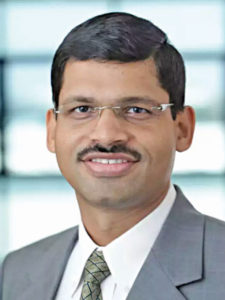
Dimitrov Krishnan, President, ICEMA and Managing Director, Volvo CE India, said, “The Indian Construction Equipment Industry boasts of a large presence of global CE OEMs alongside domestic players, which has led to enhanced focus on R&D and innovation in the sector. ‘State-of-the-Art’ manufacturing technologies being used by CE OEMs in India is at par with the world. Further, it is also important to note that domestically manufactured equipment is being exported to major markets across the globe, including the EU, UK and US, implying that Indian construction equipment meet global quality standards and are well-accepted in advanced markets globally. Needless to say, this is a clear indication that India has the potential to become a global hub for exports of construction equipment.”
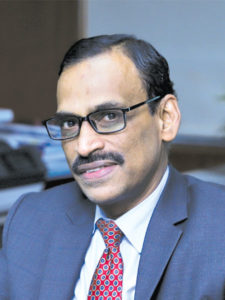 M.V. Rajasekhar, Director (Mining & Construction), BEML, said, “The infrastructure sector is receiving an intense push from the Government, propelling India’s overall development and GDP with the focus on the theme ‘Building India for a New World. The new policies announced by the Government would ensure the time-bound creation of world-class infrastructure in the country.
M.V. Rajasekhar, Director (Mining & Construction), BEML, said, “The infrastructure sector is receiving an intense push from the Government, propelling India’s overall development and GDP with the focus on the theme ‘Building India for a New World. The new policies announced by the Government would ensure the time-bound creation of world-class infrastructure in the country.
With this drive, the industry estimates sales of construction equipment to grow by 15-20% in fiscal 2023 both in domestic and exports sales, compared with an 8% fall during the last fiscal year.
The Indian construction equipment industry, being the third largest market in the world and further with a greater thrust on automation, adoption of advanced technologies and global best practices, usage of alternate fuels, new emission norms and innovations, India would definitely be an emerging hub for construction equipment component outsourcing base and design base.”
 Arvind K Garg, Vice-President and Head, L&T Construction & Mining Machinery, said, “The Government’s sustained thrust on infrastructure-led development will undeniably act as the growth fulcrum for the Indian Construction Equipment (CE) industry which is expected to emerge as the second-largest globally between 2030 and 2035. On the supply side, India has developed a robust ecosystem of OEMs (Original Equipment Suppliers), vendors, distributors and dealers to meet the projected demand growth. The potential of the Indian market has prompted Global CE majors to set up manufacturing bases in India that are now also being used as export sourcing hubs for their global operations. The CE industry is enthused by the Government’s unwavering approach to infrastructure-led growth and is fully geared to support GOIs plans for indigenisation by fulfilling the mission of Atmanirbhar Bharat with high levels of localisation in over 90% of equipment sold. These equipment also cater to the export markets. The Construction Equipment manufactured here are state-of-the-art, provide operator comfort, are contemporary, and meet international safety standards while complying with global emission norms. These machines have been deployed in critical national projects – from the Atal Tunnel to key bridges and roads in the Nathu La Sector to the most challenging projects undertaken by Border Roads Organisation in Leh and the Northeast.”
Arvind K Garg, Vice-President and Head, L&T Construction & Mining Machinery, said, “The Government’s sustained thrust on infrastructure-led development will undeniably act as the growth fulcrum for the Indian Construction Equipment (CE) industry which is expected to emerge as the second-largest globally between 2030 and 2035. On the supply side, India has developed a robust ecosystem of OEMs (Original Equipment Suppliers), vendors, distributors and dealers to meet the projected demand growth. The potential of the Indian market has prompted Global CE majors to set up manufacturing bases in India that are now also being used as export sourcing hubs for their global operations. The CE industry is enthused by the Government’s unwavering approach to infrastructure-led growth and is fully geared to support GOIs plans for indigenisation by fulfilling the mission of Atmanirbhar Bharat with high levels of localisation in over 90% of equipment sold. These equipment also cater to the export markets. The Construction Equipment manufactured here are state-of-the-art, provide operator comfort, are contemporary, and meet international safety standards while complying with global emission norms. These machines have been deployed in critical national projects – from the Atal Tunnel to key bridges and roads in the Nathu La Sector to the most challenging projects undertaken by Border Roads Organisation in Leh and the Northeast.”
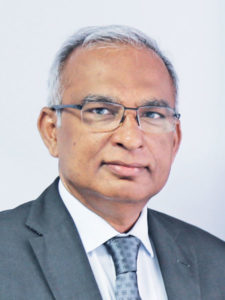 Ramesh Palagiri, Managing Director and CEO, Wirtgen India, said, “The Wirtgen Group in India, has a world class manufacturing facility in Pune. We are currently producing variety of road construction equipment both for domestic and global markets. Lean Manufacturing serves as the foundation of manufacturing at Wirtgen India. Lean is not just about 5S or elimination of waste. It is more of a mindset. It is about Philosophy, Processes, People and most importantly Problem Solving. We stick to the basics and use latest technological tools such as IoT as means to improve and get better every day.”
Ramesh Palagiri, Managing Director and CEO, Wirtgen India, said, “The Wirtgen Group in India, has a world class manufacturing facility in Pune. We are currently producing variety of road construction equipment both for domestic and global markets. Lean Manufacturing serves as the foundation of manufacturing at Wirtgen India. Lean is not just about 5S or elimination of waste. It is more of a mindset. It is about Philosophy, Processes, People and most importantly Problem Solving. We stick to the basics and use latest technological tools such as IoT as means to improve and get better every day.”
 Alok Jha, Director, Sales & Marketing, India & SAARC, CASE Construction Equipment, said “We believe in and are firmly committed to contributing to making India a global manufacturing hub. There are growing opportunities for OEMs here with supportive Government schemes and initiatives like the Production-Linked Incentive (PLI), Aatmanirbhar Bharat, Make in India and other such initiatives. Furthermore, programmes like Sagarmala by the Ministry of Shipping benefits companies looking at producing in India for domestic as well as foreign markets. This programme will improve last mile connectivity with the ports, thereby helping to export heavy construction equipment to overseas market as well. CASE India has been manufacturing construction equipment in India and offers 75% indigenous equipment for the domestic as well as foreign markets for over three decades. We are in-line with Indian government’s various initiatives and are looking towards making our Pithampur plant a global manufacturing hub for CASE products.”
Alok Jha, Director, Sales & Marketing, India & SAARC, CASE Construction Equipment, said “We believe in and are firmly committed to contributing to making India a global manufacturing hub. There are growing opportunities for OEMs here with supportive Government schemes and initiatives like the Production-Linked Incentive (PLI), Aatmanirbhar Bharat, Make in India and other such initiatives. Furthermore, programmes like Sagarmala by the Ministry of Shipping benefits companies looking at producing in India for domestic as well as foreign markets. This programme will improve last mile connectivity with the ports, thereby helping to export heavy construction equipment to overseas market as well. CASE India has been manufacturing construction equipment in India and offers 75% indigenous equipment for the domestic as well as foreign markets for over three decades. We are in-line with Indian government’s various initiatives and are looking towards making our Pithampur plant a global manufacturing hub for CASE products.”
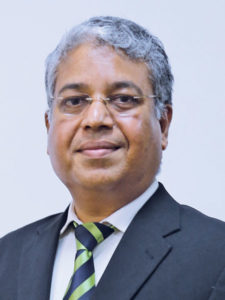 V. G. Sakthikumar, Managing Director, Schwing Stetter India, said, “The Global Manufacturing Hub, Cheyyar, Tamilnadu is a smart manufacturing facility which was inaugurated in the year 2021 hosts a manufacturing process that is mostly automated and IoT connected. The man-machines have also been automated for efficient monitoring. We follow a Zero Accident Culture, and we preserve this practice with the installation of 360 degree cameras, numerous safety signs, ever-ready medical team with ambulance, flameless and centralized kitchen, regular risk assessment, safety training, machinery equipped with safety sensors to premeditate any safety risk issue and accessible safety exits in all of our manufacturing facilities.”
V. G. Sakthikumar, Managing Director, Schwing Stetter India, said, “The Global Manufacturing Hub, Cheyyar, Tamilnadu is a smart manufacturing facility which was inaugurated in the year 2021 hosts a manufacturing process that is mostly automated and IoT connected. The man-machines have also been automated for efficient monitoring. We follow a Zero Accident Culture, and we preserve this practice with the installation of 360 degree cameras, numerous safety signs, ever-ready medical team with ambulance, flameless and centralized kitchen, regular risk assessment, safety training, machinery equipped with safety sensors to premeditate any safety risk issue and accessible safety exits in all of our manufacturing facilities.”
 BKR Prasad, Head, Marketing & Product Development, Tata Hitachi Construction Machinery Company, said, “The construction equipment manufacturing in India has come a long way from being largely imported in the early to late nineties to a large part being manufactured locally to cater to the evolving customer requirements and tough local operating conditions.
BKR Prasad, Head, Marketing & Product Development, Tata Hitachi Construction Machinery Company, said, “The construction equipment manufacturing in India has come a long way from being largely imported in the early to late nineties to a large part being manufactured locally to cater to the evolving customer requirements and tough local operating conditions.
Starting from Backhoe Loaders, Mobile Cranes & Excavators, manufacturing in India now caters to most part of the CE market comprising Compacting Equipment, Drills, Crushers, Concrete Equipment, Batching plants, Pavers, Graders, Mining Dumpers, Crawler Cranes, etc. With volumes going up in line with the sustained growth of Indian Infrastructure investment over the last two decades, increased cost efficiencies have been achieved through modern technologically advanced design & manufacturing processes to an extent that most of the Indian Construction Equipment are very competitive in the international market where they are specifically required.
Several OEMs including Tata Hitachi manufacture & export a wide variety of Construction Equipment to the Global markets ranging from the Middle East, Africa, South East Asia as well as far as Europe, Latin America & North America.”
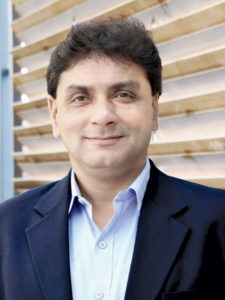 Speaking about how technologically advanced are the manufacturing facilities in India and the safety features incorporated in these facilities, Debasish Bhattacharya, National Head, Sales, Marketing and product support, Ajax Engineering, said, “In our manufacturing facility, we do make use of PLC Controlled Moving conveyor system for assembly line, Paint Shop & Sub-assembly conveyors, Electrostatic guns for painting, Downdraft wet painting booths and remote operated EOT Cranes. With use of advanced equipment following safety features are implemented in the plant. 1. Overload cut-off systems with shear pin alarm. 2. Emergency and Pause buttons for safety. 3. Automatic lubrication systems. 4. Automatic tension adjustment for conveyor chains. 5. Conveyor chain mis alignment safety sensors. 6. 10% reduction in the paint consumption. 7. This reduce paint dust for operator compared to dry booth and environmentally friendly – Paint will not escape to atmosphere. 8. Load cells for overload cut-off. 9. Slow and fast speed operation. 10. Crane collision sensors. 11. Limit switches for avoiding accidents. We also have advanced training facility “techsaala” and offer regular training to Operator on work safety, 5S, Ohno’s circle, Poka-yokes, assembly process and tool Usage.”
Speaking about how technologically advanced are the manufacturing facilities in India and the safety features incorporated in these facilities, Debasish Bhattacharya, National Head, Sales, Marketing and product support, Ajax Engineering, said, “In our manufacturing facility, we do make use of PLC Controlled Moving conveyor system for assembly line, Paint Shop & Sub-assembly conveyors, Electrostatic guns for painting, Downdraft wet painting booths and remote operated EOT Cranes. With use of advanced equipment following safety features are implemented in the plant. 1. Overload cut-off systems with shear pin alarm. 2. Emergency and Pause buttons for safety. 3. Automatic lubrication systems. 4. Automatic tension adjustment for conveyor chains. 5. Conveyor chain mis alignment safety sensors. 6. 10% reduction in the paint consumption. 7. This reduce paint dust for operator compared to dry booth and environmentally friendly – Paint will not escape to atmosphere. 8. Load cells for overload cut-off. 9. Slow and fast speed operation. 10. Crane collision sensors. 11. Limit switches for avoiding accidents. We also have advanced training facility “techsaala” and offer regular training to Operator on work safety, 5S, Ohno’s circle, Poka-yokes, assembly process and tool Usage.”
He further added, “We are the Global leader’s in SLCM and emerged as Next-Gen 360° concreting solutions Going ahead, we will strengthen ourselves in core areas of business either it may be offering innovative products, expanding the product capabilities, leverage the technology and major focus on indigenization. It’s not only the products, but the services also offered to our customers through a strong a Network base of 35 + dealers and 100 touch points will be strengthened further to ensure customer delight during after – sales support.”
 Dheeraj Panda, Chief Operating Officer (Sales, Marketing & Customer Support) Sany Heavy Industry India, said, “Having invested more than Rs. 750 crores in state-of-the-art manufacturing facility in Pune, we have made a successful transition from a global to local company with over 50 models being manufactured locally. Our Pune facility is spread across 80 acres with a manufacturing capacity of 6,000 machines. We are constantly expanding our production footprint in this location. We’ve been growing into newer shops and newer product lines, as well as automating a lot of processes. We’ve increased the amount of work we outsource to suppliers and expanded our own assembly capability. In the last two years, we’ve built a new dump truck line with a monthly capacity of about 100 trucks. In the factory, we’ve added a new motor grader line and increased the capacity of our excavator line. We’re growing our fabrication line and established a new paint shop, so we’ve been steadily increasing both in-house manufacturing and the overall factory size.”
Dheeraj Panda, Chief Operating Officer (Sales, Marketing & Customer Support) Sany Heavy Industry India, said, “Having invested more than Rs. 750 crores in state-of-the-art manufacturing facility in Pune, we have made a successful transition from a global to local company with over 50 models being manufactured locally. Our Pune facility is spread across 80 acres with a manufacturing capacity of 6,000 machines. We are constantly expanding our production footprint in this location. We’ve been growing into newer shops and newer product lines, as well as automating a lot of processes. We’ve increased the amount of work we outsource to suppliers and expanded our own assembly capability. In the last two years, we’ve built a new dump truck line with a monthly capacity of about 100 trucks. In the factory, we’ve added a new motor grader line and increased the capacity of our excavator line. We’re growing our fabrication line and established a new paint shop, so we’ve been steadily increasing both in-house manufacturing and the overall factory size.”
 Jaideep Shekhar, Managing Director, Terex India, said, “India is expected to surpass China as the second-largest player in the construction equipment (CE) market, as the country is expected to witness significant growth in infrastructure development projects over the next ten to fifteen years. With the government’s massive push to the infrastructure sector during the budget of 2022, the Construction Equipment industry in India is going to grow further. Hosur is a global manufacturing hub for Terex and Terex continues to strengthen its foothold in India’s Construction Equipment Market by bringing in new technologies, expanding its product portfolio, and entering new construction territories.
Jaideep Shekhar, Managing Director, Terex India, said, “India is expected to surpass China as the second-largest player in the construction equipment (CE) market, as the country is expected to witness significant growth in infrastructure development projects over the next ten to fifteen years. With the government’s massive push to the infrastructure sector during the budget of 2022, the Construction Equipment industry in India is going to grow further. Hosur is a global manufacturing hub for Terex and Terex continues to strengthen its foothold in India’s Construction Equipment Market by bringing in new technologies, expanding its product portfolio, and entering new construction territories.
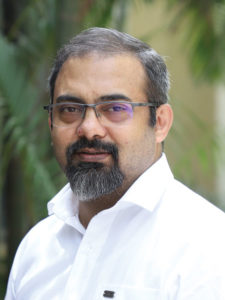 According to Animesh Nandy, National Sales Manager (India, Nepal, Bhutan, Bangladesh & Sri Lanka), Epiroc Mining India, “The Indian construction industry has undergone a significant growth with 17.1% rise recorded in 2021. The recent reforms, policies and initiatives by the Government has concocted a strong pipeline of infrastructure projects across various sectors furthering opportunities and growth projections. The increased in house consumption has not just opened the grounds for greater technological advancement but has also encouraged better development of local resources. This has positively affected the country’s capacity and potential to become a big player in the global market.”
According to Animesh Nandy, National Sales Manager (India, Nepal, Bhutan, Bangladesh & Sri Lanka), Epiroc Mining India, “The Indian construction industry has undergone a significant growth with 17.1% rise recorded in 2021. The recent reforms, policies and initiatives by the Government has concocted a strong pipeline of infrastructure projects across various sectors furthering opportunities and growth projections. The increased in house consumption has not just opened the grounds for greater technological advancement but has also encouraged better development of local resources. This has positively affected the country’s capacity and potential to become a big player in the global market.”
 Pankaj Kumar, Vice President, Dozco (India), said, “The Construction Equipment (CE) Industry’s “Vision Plan 2030: Building the Nation” can only be achieved by unlocking this industry’s true potential through sustained demand creation, building a robust operating eco-system and building a stable foundation.
Pankaj Kumar, Vice President, Dozco (India), said, “The Construction Equipment (CE) Industry’s “Vision Plan 2030: Building the Nation” can only be achieved by unlocking this industry’s true potential through sustained demand creation, building a robust operating eco-system and building a stable foundation.
India’s CE industry eco-system is characterised by a large number of players including OEMs, suppliers, bankers; financiers, traders amongst others. In pursuit of this objective, we have to strengthen manufacturing Indian CE industry with hi-tech equipment, provide comprehensive information of CE industry stakeholders including OEMs, suppliers/vendors and financiers etc., promote Indian CE products in the international markets and need investments in Indian CE industry through global suppliers setting up manufacturing base in India.”
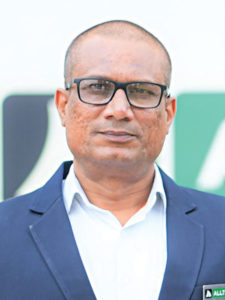 Paresh Patel, Director – Global Sales, Alltech Industries India, said, “In future we can see growth of infrastructure in India, by evaluating the potential it has, and the opportunities. The Indian Government has announced some of the biggest structural reforms. Indian market of Road construction machines/equipment are booming itself. As we know that infrastructure segment is improving day by day, so India should also focus on equipment so that we can compete with other countries.”
Paresh Patel, Director – Global Sales, Alltech Industries India, said, “In future we can see growth of infrastructure in India, by evaluating the potential it has, and the opportunities. The Indian Government has announced some of the biggest structural reforms. Indian market of Road construction machines/equipment are booming itself. As we know that infrastructure segment is improving day by day, so India should also focus on equipment so that we can compete with other countries.”
 According to Safar Mohammad Khan, General Manager, Sales & Marketing (HDD), Apollo Techno Industries, “India has a great scope and potential in manufacturing, given its demographic dividend and reasonably cheap labour. However, larger investments, upskilling of workforce and upgrading infrastructure are some of the areas where more work must be done. More compliance is required to boost the manufacturing capability here in India. Main hurdles which India faces to emerge as a giant in manufacturing hubs are lack of skilled manpower in-spite of being the 2nd most populated country in the world. There is an urgent need to update the work process as well as working environment, in order to survive in this era of globalization. Many policies should be restructured, well managed and monitor by ‘Gati Shakti’ that is only a way we can make India as a giant manufacturing hub. Ministry of Commerce and Industry (GOI) should take initiative on policy matter, new compliance and better execution so that everything could be accomplished. Member of ‘Gati Shakti’ should be active in realistic and practical manner.”
According to Safar Mohammad Khan, General Manager, Sales & Marketing (HDD), Apollo Techno Industries, “India has a great scope and potential in manufacturing, given its demographic dividend and reasonably cheap labour. However, larger investments, upskilling of workforce and upgrading infrastructure are some of the areas where more work must be done. More compliance is required to boost the manufacturing capability here in India. Main hurdles which India faces to emerge as a giant in manufacturing hubs are lack of skilled manpower in-spite of being the 2nd most populated country in the world. There is an urgent need to update the work process as well as working environment, in order to survive in this era of globalization. Many policies should be restructured, well managed and monitor by ‘Gati Shakti’ that is only a way we can make India as a giant manufacturing hub. Ministry of Commerce and Industry (GOI) should take initiative on policy matter, new compliance and better execution so that everything could be accomplished. Member of ‘Gati Shakti’ should be active in realistic and practical manner.”
Hits: 9








